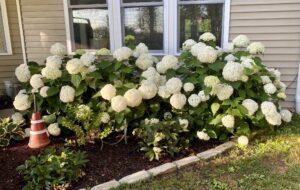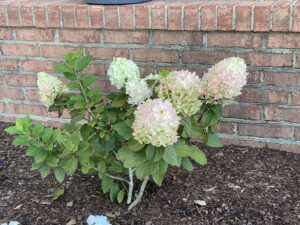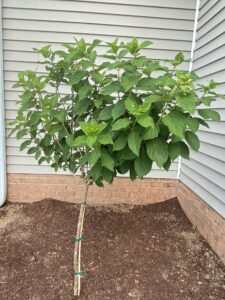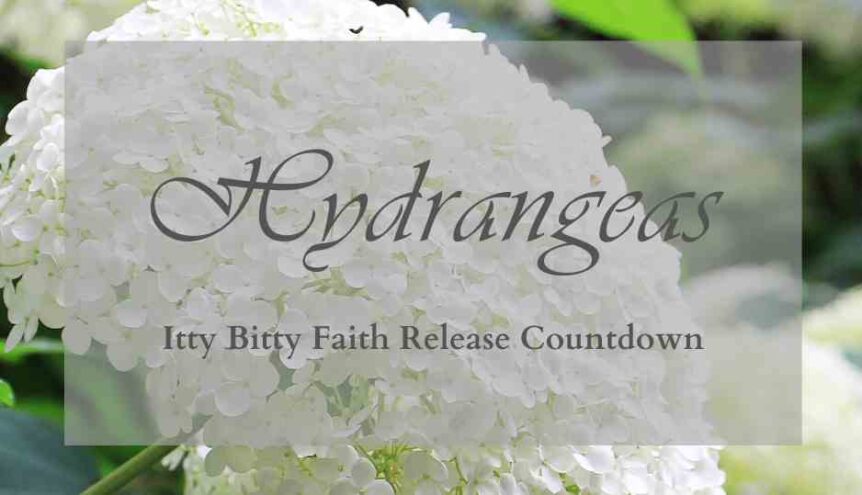 You might be wondering what motivated me to write about popular Middle Tennessee plants this week. My Bedford County Novella releases on the 18th, and since main character Alyssa Mitchell is a landscape architect (that’s a fancy name for gardener), I thought it would be fun to share some of my newly acquired plant knowledge. The yard is my happy place where I can see all the wildlife surrounding our home, and I love working in the yard. I’m going to start off with my all-time favorite plant—Hydrangeas.
You might be wondering what motivated me to write about popular Middle Tennessee plants this week. My Bedford County Novella releases on the 18th, and since main character Alyssa Mitchell is a landscape architect (that’s a fancy name for gardener), I thought it would be fun to share some of my newly acquired plant knowledge. The yard is my happy place where I can see all the wildlife surrounding our home, and I love working in the yard. I’m going to start off with my all-time favorite plant—Hydrangeas.
The first time I noticed hydrangeas was years ago when Chris and I were traveling through Maine. I was astounded at the size of these beautiful bushes—not to mention the colorful blooms they produced. I was given a small hydrangea plant later, which I tried to grow in our Northern California yard. I don’t know if the soil was too acidic (since our property was covered in pine trees) or if it was a faulty plant, but I could never get the blooms to fully open.
When we moved to Middle Tennessee, I was excited to see that hydrangeas are as common here as poppies are in California. I especially fell in love with Annabelle variety. It was released (just like a book!) in Illinois in 1960. It is part of the Hydrangea arborescens family, which is known as smooth hydrangeas. These are big-leaved, deciduous shrubs that actually grow wild in most of the eastern part of the country, and they do well as far north as New York, west as Iowa, and south as Louisiana and Florida.
This particular variety was first noticed by a woman named Harriet Kirkpatrick in 1910. They were growing wild along a wooded trail near the Southern Illinois town of Anna. After digging them up, she transplanted them in her yard and shared specimens around town and with nearby communities. Later, this plant was “discovered” by professor Dr. Joseph McDaniel from University of Illinois who then cultivated them for commercial production. The name is a nod to the “belles” from the town of Anna for obvious reasons.
 The blooms are what sets them apart from most other hydrangea varieties. These beautiful blooms looke like huge snowballs. They start out green and turn white as they ripen and can bloom all through June and July. Another thing I love about hydrangeas is that they can be easily dried and used all year long for ornamental décor, although I’ve never tried it before. These plants do well in USDA zones 6-9. The shrub itself can reach between three and six feet tall.
The blooms are what sets them apart from most other hydrangea varieties. These beautiful blooms looke like huge snowballs. They start out green and turn white as they ripen and can bloom all through June and July. Another thing I love about hydrangeas is that they can be easily dried and used all year long for ornamental décor, although I’ve never tried it before. These plants do well in USDA zones 6-9. The shrub itself can reach between three and six feet tall.
The only downside to this spectacular variety is their spindly branches, which tend to droop after a heavy rain. I read that pruning them back in winter will help them to grow stronger branches. The three small shrubs I planted beneath our family room window quickly grew together, and now it appears to be one very showy plant.
 These hydrangeas (like most of them) prefer shade over sun. But when I went searching for a small tree to plant in one corner of our sunny front yard, a nursery owner suggested I try a limelight hydrangea tree. Limelight hydrangeas also have white blooms, but they are conical rather than round. I also purchased a dwarf limelight to plant in my front flower bed. This particular variety goes from green to white to shades of pink.
These hydrangeas (like most of them) prefer shade over sun. But when I went searching for a small tree to plant in one corner of our sunny front yard, a nursery owner suggested I try a limelight hydrangea tree. Limelight hydrangeas also have white blooms, but they are conical rather than round. I also purchased a dwarf limelight to plant in my front flower bed. This particular variety goes from green to white to shades of pink.
If you were to come to my house, you’d quickly see what a nut I am about hydrangeas. Aside from the Annabelles, limelight tree, and two limelight shrubs, I also have two other big-leaf hydrangeas in the yard and two in pots on my front porch.
You may not be able to purchase these beauties on Amazon, but be sure to enter here for a chance to win a $25 Gift Card anyway. Maybe you can use them for gardening tools, or seeds, or a book!






